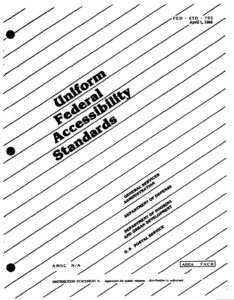Electric submetering vs utility metering has both pros and cons for owners. For larger multi-family projects such as apartments and condominiums, the question is often asked upfront about providing utility electric metering versus electronic submetering. To clarify, metering of individual units electric use is required per Code (2018 IECC C405.5 – Mandatory Each dwelling unit located in a Group R-2 building shall have a separate electrical meter.)
From the owner’s (and ultimately the property manager’s) perspective, individual utility metering is attractive because the serving utility deals directly with each resident, and all billing and potential dispute/collection and service disconnect issues for lack of bill payment is not a management concern as opposed to electronic submetering where the property manager now becomes the “utility” responsible for all billing issues, disputes and payment of the entire utility bill. This is the primary reason owners desire to have utility metering – eliminating the hassles of dealing with the residents over the utility billing.
From a design perspective, there are several considerations for each scenario, each with pros and cons, as follows:
Utility Metering Scenario – Pros
- All billing handled by utility company – minimal management responsibility
- Reduced initial utility infrastructure cost (i.e. utility site distribution and service facilities including transformers, wiring, etc.) based on utility metering “service allowance” for future revenue to a utility.
Utility Metering Scenario – Cons
- Increased physical space required for the installation of utility multi-metering equipment required. Most serving utilities require service and metering equipment to be installed on the exterior of the building which requires significant space on the exterior of the buildings and is not architecturally desirable.
- Building design potentially adversely affected due to increased space requirements – less amenity space available for resident use.
Electronic Submetering Scenario – Pros
- Reduced physical space requirements (both exterior and interior) for service and distribution equipment allowing for more efficient use of the building and amenity spaces.
- Simplified service and distribution equipment – service to individual dwelling units is more flexible and can be tailored to suit specific requirements more easily than standard utility metering (i.e. individual service ratings can be varied more easily than utility metering).
- Potential for individual residents to have access to real-time billing information so they can monitor their own energy use and modify their use as desired.
Electronic Submetering Scenario – Cons
- All individual resident billing must be handled and provided to individual residents by the property owner/manager or a 3rd party vendor at additional expense. These costs can be incorporated into the resident billing, but resident energy use must be billed at actual utility rates and may not be marked up by the management per utility commission and state regulations. Increased management costs, responsibility, and liability. The owner is responsible for payment of entire building electrical use (via single master utility meter) regardless of resident payment.
- Increased initial utility infrastructure cost (i.e. utility site distribution and service facilities including transformers, wiring, etc.) based on utility metering “service allowance” for future revenue to utility with single “master meter”. Utility metering rates may vary based on this scenario depending on serving utility.
The owner’s decision to go with utility metering or electronic submetering usually boils down to first installed cost and typically the cost is approximately the same for either scenario with a slight edge to utility metering based on the utility infrastructure installation allowance.
The ability to reduce equipment impact on/within the building is a major factor in leaning toward the electronic submetering scheme. The 3rd party billing is usually a deterrent to most owners as it is a foreign concept and exposes them to additional cost and potential aggravation long term. A cost/benefit analysis will need to be made by the project owner for their specific project scope.
From a design perspective, the electronic submetering scheme allows for much greater design flexibility and simplifies the electrical service and distribution system. Utility coordination is also likewise simplified because there is only one point of service and one utility meter to consider. In most scenarios, utility metering typically wins out primarily due to owner familiarity with the process as well as reduced first cost (by a slim margin). We see electronic submetering in high-rise multifamily type projects with a zero lot line condition where external multimetering is not possible and internal utility metering doesn’t make sense because it takes up too much space within the buildings and typically adversely affects the distribution within the building to comply with applicable utility service standards.
We hope the foregoing information is helpful and should you have any questions about electronic submetering, please Contact EVstudio at your convenience and we would be happy to answer any questions you may have.
Resources:
NATIONAL MULTIPLE FAMILY SUBMETERING AND ALLOCATION BILLING PROGRAM STUDY










